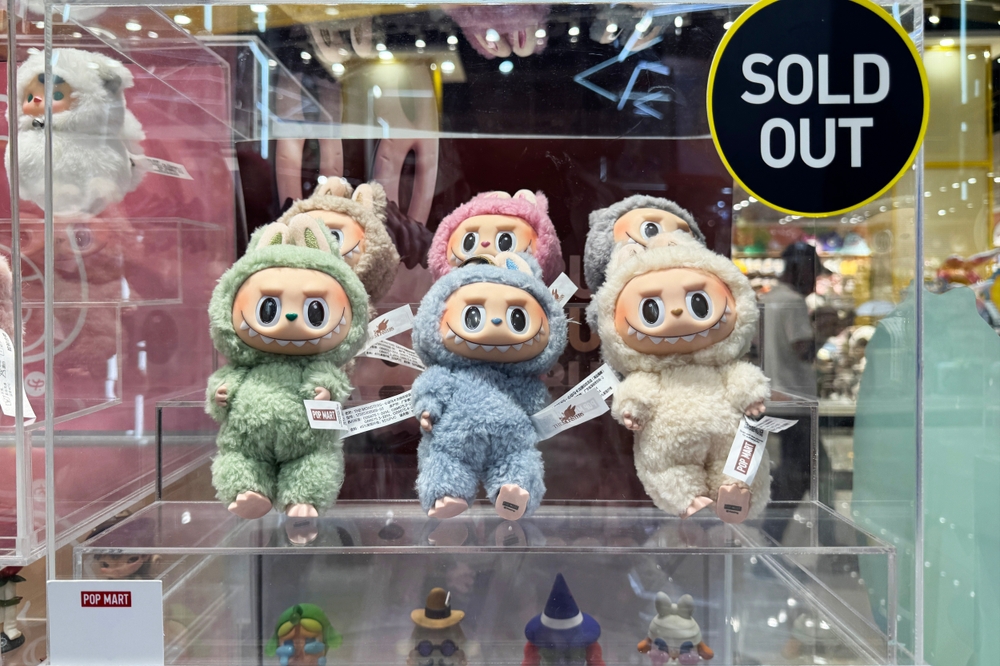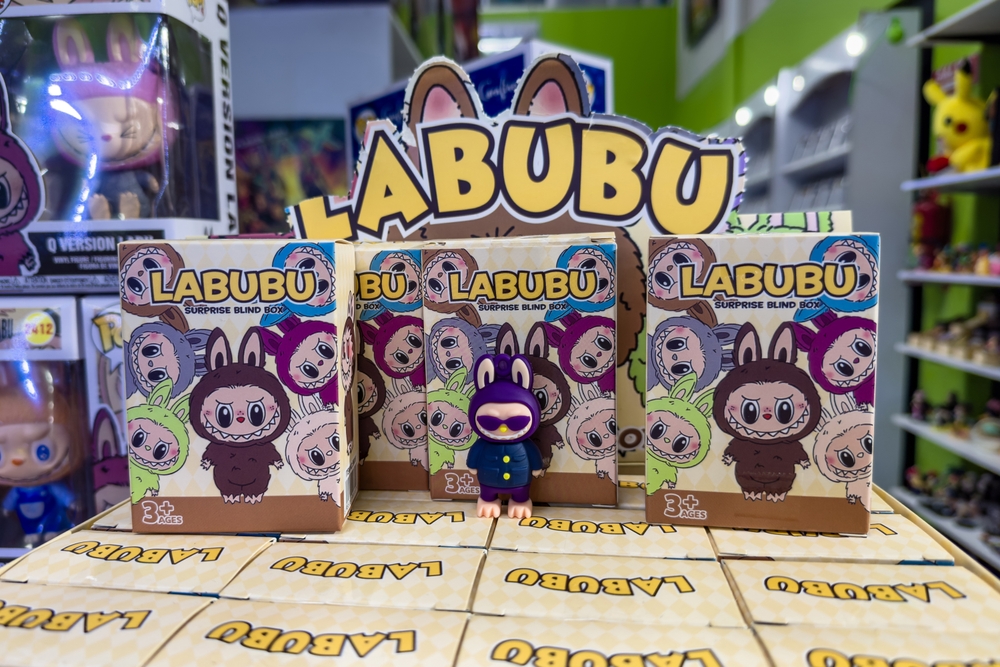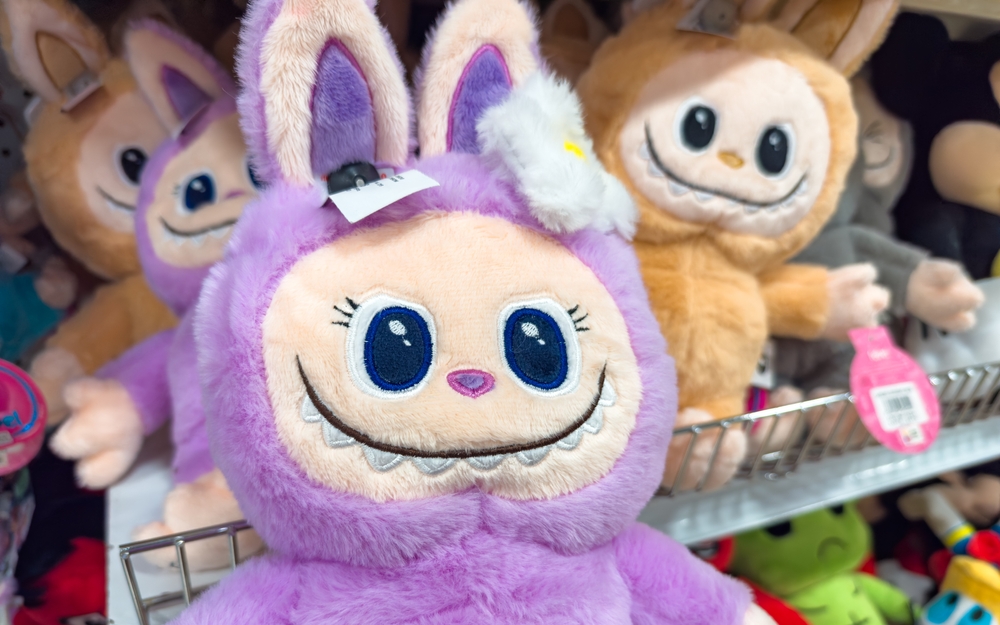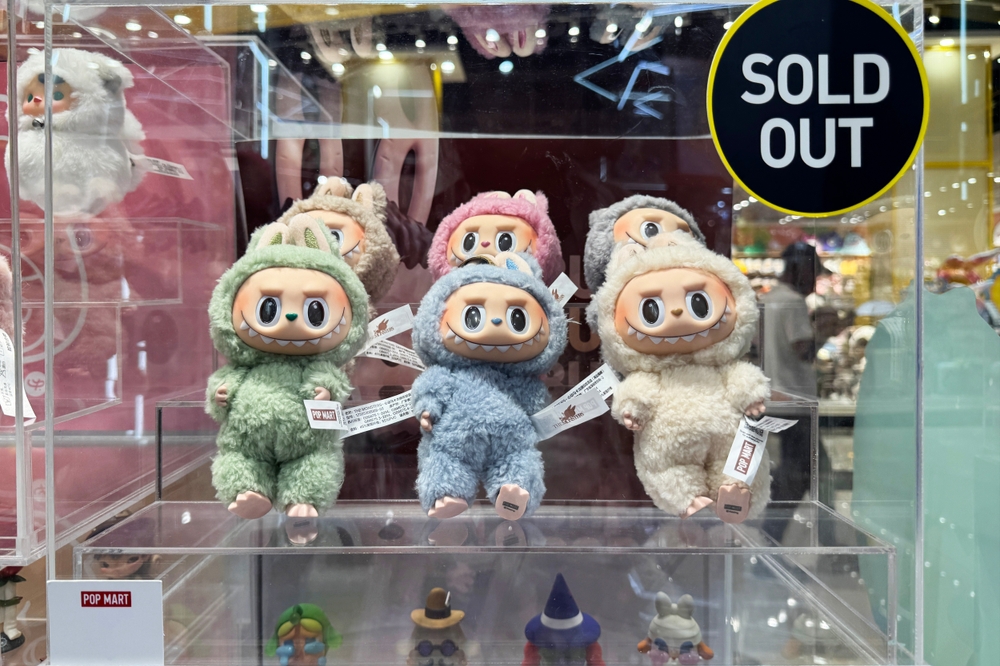Psychologist issues warning to anyone who owns a Labubu with unexpected way they’re ‘deeply symbolic’

At first glance, it’s just a toy. Fluffy, slightly odd-looking, with exaggerated features and a permanent expression of mischievous melancholy—Labubu doesn’t look like much. And yet, these little figurines have found their way onto shelves, desks, and Instagram feeds around the world. Not just in the hands of children, but clutched tightly by adults. Especially young adults. Especially now.
What is it about this quirky, inanimate creature that resonates so deeply with an entire generation?
Look a little closer, and you’ll see something much bigger hiding behind the eyes of Labubu—something intimate, something cultural, and something symbolic. This isn’t just about collecting toys. It’s about collecting moments of safety in an unsafe world. It’s about trying to feel seen, understood, and soothed in a time where many feel overwhelmed, disconnected, and emotionally exhausted.

The Rise of Trinket Culture – A Psychological Response to a Fractured World
In an era dominated by digital overload, economic instability, and existential uncertainty, it’s often the smallest, most seemingly insignificant objects that offer surprising meaning. One such example is the Labubu—a fluffy, slightly eerie figurine that has become a cultural phenomenon. Once seen as a niche collectible for children or toy enthusiasts, Labubu is now being embraced by millions of young adults across the globe. But why? What makes this odd little figure so captivating? According to psychologists, the answer lies far beneath the surface.
Dr. Tracy King, a chartered clinical psychologist, explains that the trinket craze—especially among Gen Z—is more than a trend. It’s a symptom of deeper emotional needs. “On the surface, they’re fun and whimsical. But psychologically, they’re deeply symbolic,” King shared with Tyla. “These objects offer small, accessible moments of comfort, control, and identity in an unpredictable world.” For a generation raised during back-to-back global crises—pandemics, economic meltdowns, climate anxiety—the idea of “normal” adulthood has radically shifted. Where previous generations followed a clear path toward stability, today’s youth are navigating what King describes as “an escape room,” filled with shifting goals, silent rules, and constant pressure to perform without clear instructions.
In this challenging emotional climate, Labubu and similar trinkets provide more than decoration—they become tools for self-soothing, anchors of consistency in a rapidly changing world. These soft, strange objects carry emotional weight. They remind people of childhood, of simplicity, of times when life felt more predictable or nurturing. For many, especially those who experienced emotional neglect or trauma, they serve as part of what therapists call “inner child work”—a form of healing that reconnects individuals with parts of themselves that were overlooked or hurt early in life. Owning a Labubu isn’t just about collecting—it’s about reclaiming a piece of comfort that may have once been missing.
Furthermore, this movement fits seamlessly into today’s social media landscape, where identity is not inherited but crafted, curated, and projected. In a world where aesthetics often speak louder than words, owning and sharing photos of Labubu becomes a subtle form of emotional storytelling. It’s a way of saying: “This is what brings me peace. This is who I am, or who I’m trying to be.” The cultural shift isn’t just about consumerism—it’s about expression, belonging, and emotional resilience.

Gen Z and the Search for Control, Comfort, and Identity
To understand why Gen Z is gravitating toward objects like Labubu, we have to look at the emotional landscape they’ve inherited. This is a generation that grew up in a time defined by disruption: climate change headlines, the COVID-19 pandemic, social unrest, rising economic inequality, and a digital world that never truly turns off. Unlike earlier generations that were sold the promise of a stable career path and eventual security, Gen Z often finds itself navigating a world that feels unstable, fluid, and deeply uncertain.
Dr. Tracy King highlights that the traditional roadmap of success—study hard, get a degree, land a stable job, buy a house—is no longer a guaranteed reality. Instead, Gen Z is facing what feels like an endless improvisation. She likens it to being trapped in an escape room, expected to solve complex problems without clear instructions while the rules change mid-game. This psychological environment fosters a deep yearning for things that offer even a sliver of predictability or control. That’s where trinkets like Labubu come in—not as solutions, but as stabilizers.
In the absence of large, life-defining milestones, Gen Z is “investing in now,” as Dr. King puts it. Instead of saving for a distant, uncertain future, they’re pouring their energy into what’s immediately tangible and emotionally gratifying. Small joys, aesthetic comforts, and symbolic purchases offer quick, accessible ways to express who they are and how they feel. These are not shallow distractions—they’re survival strategies in a world where emotional burnout is increasingly common, and mental health systems are often overstretched or inaccessible.
Equally important is how identity plays into this dynamic. Unlike previous generations, Gen Z grew up in a digital landscape where selfhood is curated rather than assumed. Social media platforms like Instagram, TikTok, and Pinterest have turned personal aesthetics into both communication and community-building tools. Owning a Labubu, photographing it, and sharing it online isn’t just about the object itself—it’s about saying something: “This represents me. This is part of my story.” In a society where real-world belonging often feels fragile or fractured, digital identity markers become a way to build connection, even if it’s through something as small as a toy.

Nostalgia, Inner Child Healing, and the Need to Feel Safe
At the heart of Labubu’s emotional pull is something more personal than aesthetics or even identity—it’s nostalgia. And not just a longing for the past, but a deep, psychological yearning to reconnect with a time when things felt simpler, safer, or more nurturing. This is where the idea of inner child healing comes into play—a therapeutic process that focuses on revisiting and nurturing the younger parts of ourselves that may have been hurt, neglected, or rushed into adulthood too soon.
Dr. Tracy King emphasizes that for many people, especially those in Gen Z, these figurines aren’t just cute collectibles—they’re emotional placeholders. “These soft, playful objects evoke feelings of safety, care, and nostalgia—things that might’ve been missing or cut short in early life,” she explains. In this way, Labubu serves as more than a toy; it’s a tool for emotional reconnection. For individuals who may not have felt fully seen or supported as children, these trinkets allow them to reclaim a sense of innocence and joy that might have been interrupted.
The power of nostalgia is well-documented in psychology. Research has shown that nostalgic experiences can boost mood, increase feelings of social connection, and even enhance meaning in life. But when tied to physical objects like Labubu, nostalgia becomes tactile. It’s not just a memory—it’s something you can hold, see, and return to when you need a break from the intensity of modern life. It becomes a miniature sanctuary, a symbolic reminder that joy, softness, and wonder still have a place in adulthood.
What makes this especially poignant for Gen Z is the speed at which they were forced to mature. Many came of age during a global pandemic, witnessing illness, isolation, and instability at formative stages of development. Add to that the relentless pressures of online comparison, academic competition, and economic anxiety, and it’s easy to understand why so many are seeking refuge in objects that offer a psychological timeout. Labubu doesn’t judge, doesn’t compete, doesn’t demand. It simply is—a small presence of comfort in a loud and complex world.
Aesthetic Belonging and the Power of Symbol in a Hyperconnected Culture
While the emotional and psychological connections to Labubu are deeply personal, their rise is also a social phenomenon—one that reflects how community and culture have shifted in the digital age. In a world where so much of our identity is shaped and shared online, symbolic objects like Labubu don’t just comfort us—they communicate for us. They’ve become emblems of aesthetic belonging, little visual badges that say: “I’m part of something.”
This isn’t about following a trend for trend’s sake. It’s about using shared symbols to feel seen, understood, and connected—especially in a time when traditional community structures are fading. Churches, neighborhood clubs, and local meetups once served as primary sources of connection. Today, those connections are often made on Instagram feeds and TikTok comment sections. And in those spaces, objects like Labubu take on outsized meaning. They’re not just toys—they’re part of an emotional language.
As Dr. King notes, “In a social media landscape where aesthetics are a form of communication, trinkets become part of how people express emotion, personality, and belonging.” This makes sense when you consider how platforms reward expression. A shelf full of Labubu figurines isn’t just decoration—it tells a story. It’s curated, intentional, and filled with emotional cues: softness, whimsy, nostalgia, playfulness. It signals that the owner values gentleness and introspection in a world that often prizes hustle and hardness.
Moreover, in a hyper-visual digital world, symbols become shortcuts. People might not take time to read a full post or watch a long video—but they instantly register an image. Labubu, with its distinctive look, evokes a whole emotional palette at a glance. This makes it a perfect vehicle for identity signaling: a small, symbolic object that carries emotional weight and social relevance without needing to be explained.
There’s also a collective comfort in seeing others embrace the same objects and rituals. If you’re struggling silently, and then you see hundreds—or thousands—of others celebrating the same comforting figure you just bought on impulse, it tells you: “You’re not alone in feeling the way you do.” In a fragmented world, that kind of unspoken solidarity is powerful. It transforms private coping into communal healing.
Loading...

